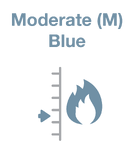In this issue:
- Broker Survey Results
- Expert Ed Education Piece
- Fire Danger Risks: Forestry
Broker Survey Results
Recently we asked a selection of insurance brokers to participate in a survey. The purpose of the survey being to ensure that what is important to you (and your client’s) remains as top priority for TLC Insurance. To no surprise, the top five priorities have not changed since we last conducted the survey! The results were as follows (in order of priority):
Premium stability – We have maintained the same philosophy over the past 24 years, with slight incremental premium increases year on year to avoid an overreaction when a policy renews following a large loss. This approach means brokers and clients have an idea of what to expect with no surprises at renewal.
Claims turnaround time – The claims experience has always sat as top priority for TLC Insurance. Having our claims team in house means that we can prioritise claims quickly and effectively.
Product range/breadth of cover – We continue to offer three key products: mobile plant; commercial motor; and a combined liability package. Our appetite for our mobile plant cover remains broad, and on the commercial motor, we now only require ONE item of plant to be underwritten with TLC Insurance in order to quote the motor.
New business quoting and turnaround times – We are always on the lookout for new business, and it is important that when we are approached that we respond in a timely manner. On receipt of all information, we will respond within 48 hours!
Access to key people with expertise and experience – We would like to think that we know a little about heavy machinery, having operated in this space for 24 years. Did you know that the average tenure of TLC staff is currently 5 years, with out longest current staff member clocking 15 years and counting!
This survey gave us valuable insight into validating how we conduct business at TLC Insurance, remaining aligned with what is important to you and your clients.
Expert Ed Education Piece
You may recall receiving our first Turbo Talk education piece in September. Our first topic covered the accidental death extension. We had amazing readership for our first edition, and we will continue to publish education pieces on a quarterly basis. The next edition will be on Windscreen cover. If you have any suggestions for upcoming topics that you would benefit in learning more about, please fill out the form here.
Fire Danger Risks: In the Forestry Sector
Going into summer is a great time to remind your clients about the heightened risk of machinery fires and the broader risk that this presents to New Zealand’s forests. Fires are always traumatic and almost always a TOTAL LOSS event. An annual review of a fire protection plan today could save the devastating affects of a significant and avoidable loss.
In New Zealand, fire danger across a range of vegetative fuel types is assessed using the New Zealand Fire Danger Rating System (NZFDRS). The NZFDRS consists of several core components and is based upon the Canadian Forest Fire Danger Rating System (CFFDRS), it has been in use in NZ since 1980.
Around New Zealand you may have noticed a colourful board with an arrow pointing to the current fire danger. Colour codes for broad fire-danger classes are useful for fire management and for informing the public of fire danger. Please see below for standard descriptions and colour codes (these may vary between fire agencies and or unit policy):
Fuels do not ignite readily from small firebrands although a more intense heat source, such as lightning, may start fires in duff or punky wood. Fires in open cured grasslands may burn freely a few hours after rain, but woods fires spread slowly by creeping or smouldering, and burn in irregular fingers. There is little danger of spotting.
Fires can start from most accidental causes, but with the exception of lightning fires in some areas, the number of starts is generally low. Fires in open cured grasslands will burn briskly and spread rapidly on windy days. Timer fires spread slowly to moderately fast. The average fire is of moderate intensity, although heavy concentrations of fuel, especially draped fuel, may burn hot. Short-distance spotting may occur, but is not persistent. Fires are not likely to become serious and control is relatively easy.
All fine dead fuels ignite readily and fires start easily from most causes. Unattended brush and campfires are likely to escape. Fires spread rapidly and short distance spotting is common. High-intensity burning may develop on slopes or in concentrations of fine fuels. Fires may become serious and their control difficult unless the are attacked successfully.
Fires start easily from all causes and, immediately after ignition, spread rapidly and increase quickly in intensity. Spot fires are a constant danger. Fires burning in light fuels may quickly develop high intensity characteristics such as long-distance spotting and fire whirlwinds when the burn into heavier fuels.
Fires start quickly, spread furiously, and burn intensely. All fires are potentially serious. Development into high intensity burning will usually be faster and occur from smaller fires than in the very high fire danger class. Direct attack is rarely possible and may be dangerous except immediately after ignition. Fires that develop headway in heavy slash or in conifer stands may be unmanageable while the extreme burning condition lasts. Under these conditions the only effective and safe control action is on the flanks until the weather changes or the fuel supply lessens.
Until next time, we hope that you have a happy and safe long weekend, particularly if you are travelling on the roads.
Kind Regards
Andrew Reid
Head of TLC Insurance
0800 852 467 (0800 TLC INSURANCE)
info@tlcinsurance.co.nz
















